MALDIVES
Small Wonders
By Chadd McGlone
Chapel Hill, NC, United States
Traveling by sea to the island country of Maldives, you’ll find endless water stretching in all directions. As your boat draws closer, though, you’ll notice dark squares poking above the horizon. They’ll rise in height as you approach. You’ll wonder to yourself how palm trees could have grown rectangular foliage? Then the realization will hit you—
Those aren’t trees, they’re buildings!
Jam-Packed and in a Pickle
Resembling a sight from a science fiction movie, the capital city of Malé occupies one of the most densely populated islands in the world. More than 250,000 people are packed into apartment buildings on a circular island of one square mile (2.6 square kilometers).
Not only is Malé dense, it is also low in elevation. Its highest natural point is only 7 feet 10 inches (2.4 meters), making it the lowest country on the planet. As you can imagine, rising an average of only 4 feet 11 inches (1.5 meters) above sea level in the middle of the Indian Ocean puts it at great risk from climate change.
A Royal Past
The entire archipelago of Maldives started off with a greater number of islands than of inhabitants. An astonishing 1,192 coral islands fan out across approximately 35,000 square miles (90,000 square kilometers). Its population was estimated to be 2,147 in the late 19th century, the earliest count available. At that time, Malé was called the King’s Island and was the home of the ruling royal dynasty and its palace.
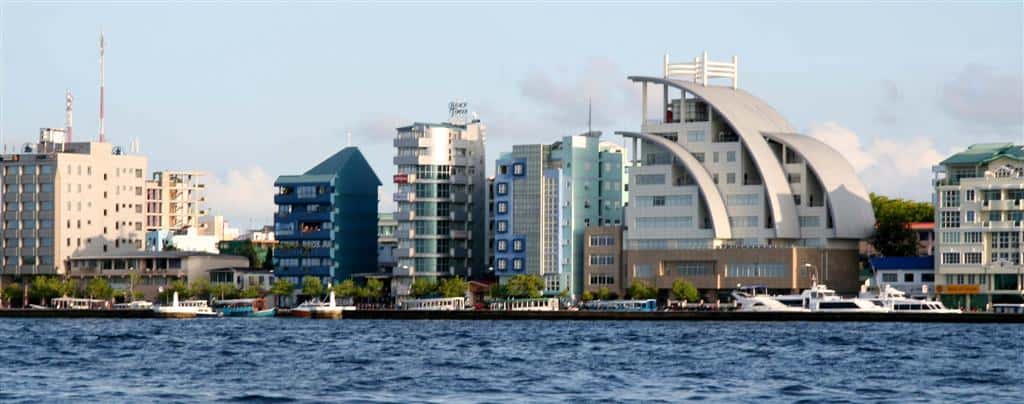
During the past century, Malé has undergone tremendous change. Not only has the population grown, but the royal palace has been replaced by concrete buildings, busy harbors and scenic boardwalks.
Tourist Tips
Today many tourists visit Malé, often stopping on the way to one of the many beautiful nearby resorts. Visitors rave about the warm, sunny weather and the ease with which they can get from place to place. With a circumference of fewer than four miles, people can easily walk anywhere on Malé.
You could see the entire city on foot in about an hour. Then when you’re ready to cool off in the ocean, head to the accurately named Artificial Beach. Leave your bikini at home, however, as this Muslim country encourages modesty while swimming. You’ll save a bundle on sunscreen!
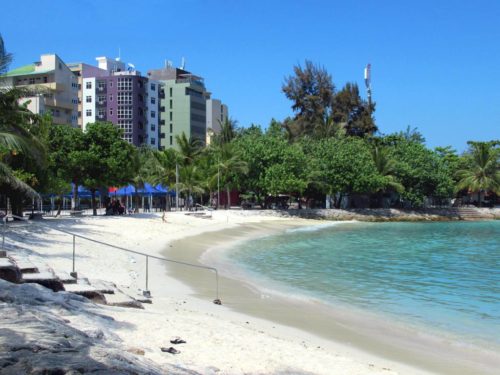
Have a suggestion for this story? We’d love for you to submit it!
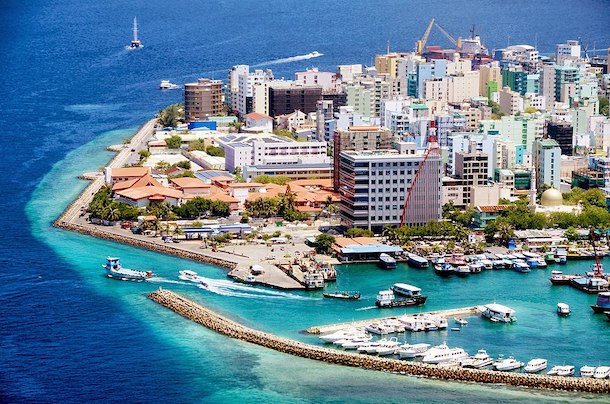
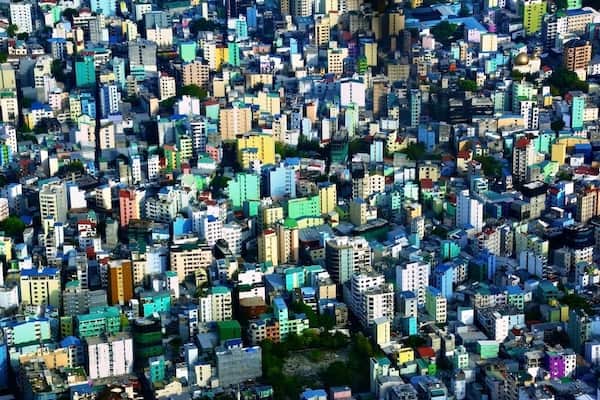
Blank
Blank
Slideshow
Are you a teacher who’s interested in telling this story to your students? Here’s a slideshow to get you started!
Math Resources
Learning Activities for High School:
Sample Problems:
- Pretend you know nothing about Maldives. Then someone hands you this banknote below and asks you to guess what might be true about the country. What answers would you give? In other words, what does this money tell you about Maldives?
- Look up the exchange rate for Maldives’ money and US dollars. How much is this banknote worth? Then calculate how many rufiyaa you’d get for US$10, US$20, and US$50.
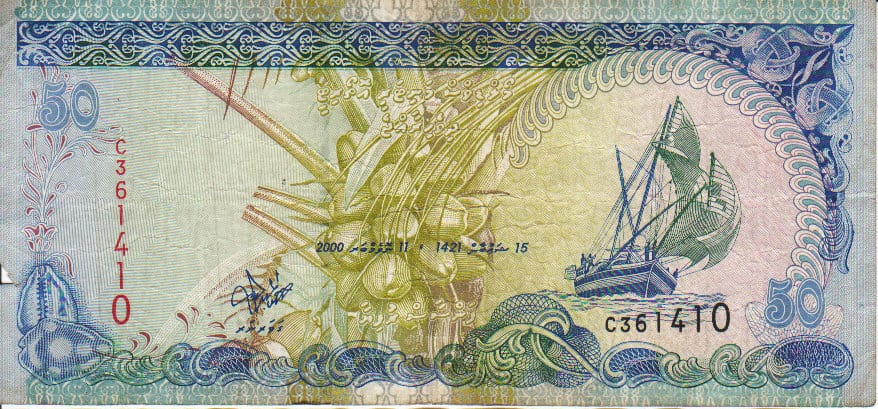
Social Justice Question
One of the strategies the Maldivian government has used to combat rising sea levels is to pump sand onto its islands to raise their elevations. It has even built an entirely new island that houses more than 100,000 people. These massive engineering projects can provide refuge to residents, but they damage nearby coral reefs. How do you weigh the human benefits against the harm to the marine ecosystem?
Explore Further
- Drone video from a flyover above Malé
- Article about building floating islands
- Research that shows benefits to coral islands
- United Nations report on climate change and its impact on Maldives
Share Your Story
Write your own Global Math Story and send it to us!
Sorry, the comment form is closed at this time.